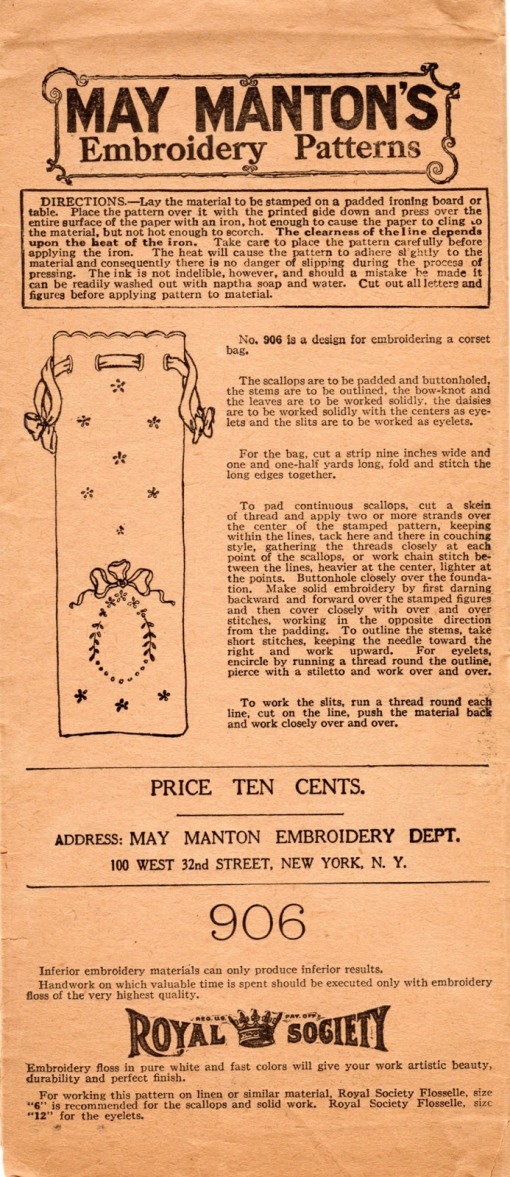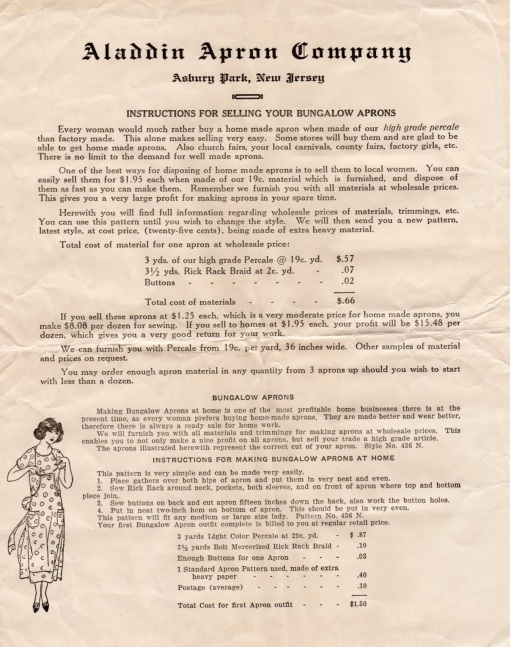Here are the rushed, but final pics from the dual purpose corset, version one.

This corset was developed and made in a hurry to get our gal closer to the Victorian shape. The first project was a Victorian-esque costume. More details on that later. It reduces her waist by 4″.
The corset is made of heavy ticking fabric. That’s not ideal for a corset. As I’ve said before, there is no substitute for coutil. Since I didn’t have any white on-hand I had to substitute something heavy that would stretch as little as possible. Ticking does stretch, but less than denim and less than plain weave canvas.
Nope, not removing the orange markings. I said down and dirty and fast and I meant it. I can remove them after Halloween.

Above you can see some of the garment seams covered by bone tape, which is a flattened, heavy-duty, tube of fabric. About 1/8″ in on both sides is an indented channel, which is a sewing guide. There really is no substitute for this stuff either, at least not if you are making a sturdy garment that will shape the wearer. It encases the bones which are 1/4″ spring steel. The front opening uses 1/2″ spring steel bones.
The other thing you’ll notice is the black ribbon at the waist. This is called the waist tape. It is technically Petersham Ribbon. It’s a ribbed ribbon similar to grosgrain ribbon (but that is not a substitute). I’m not entirely sure, but I believe those ribs are woven, unlike grosgrain, which I believe is imprinted. Don’t quote me on that. The ribbon is not stitched down along its edges; it’s only attached where ever the bone tape crosses it. It serves as a floating anchor, taking some of the strain of the waist, which has the most tension. This is key since I had to use inferior fabric.
There is one bone on each side that does not completely cover it’s corresponding seam. This is unfortunate because that seam will fray where uncovered. However, the bone only needed to extend down part of the seam, so I didn’t waste the tape. Several of the other bones are in fact shorter than their casings.

Ideally I would have used a busk opening, but I didn’t have one the correct length. Busks make getting in and out of the corset much easier. Later corsets used some materials that had stretch (though they often used coutil in conjunction), which allowed them to use other openings like hook and eye.
What makes this more of a 1930s corset is the shape and length. It goes from natural waist to hips. It shapes, as corsets are meant to do and, the length – completely covering the hips and bum – also smooths, which will help achieve the 30s smooth and minimized bum silhouette.
Version two will be made of coutil and a bit of power net at the top of the thigh to aid in walking and sitting. It will also feature garters. Most importantly it will be front opening and back lacing. I plan to use button holes instead of the standard grommets (heavy duty ones are used, not the cute little ones you find in the usual fabric store). My theory is that the button holes and a flatter cording will give a less noticeable opening, which is ideal for the streamlined garments of the 1930s.
Related posts:
First look at the 1911 corset








